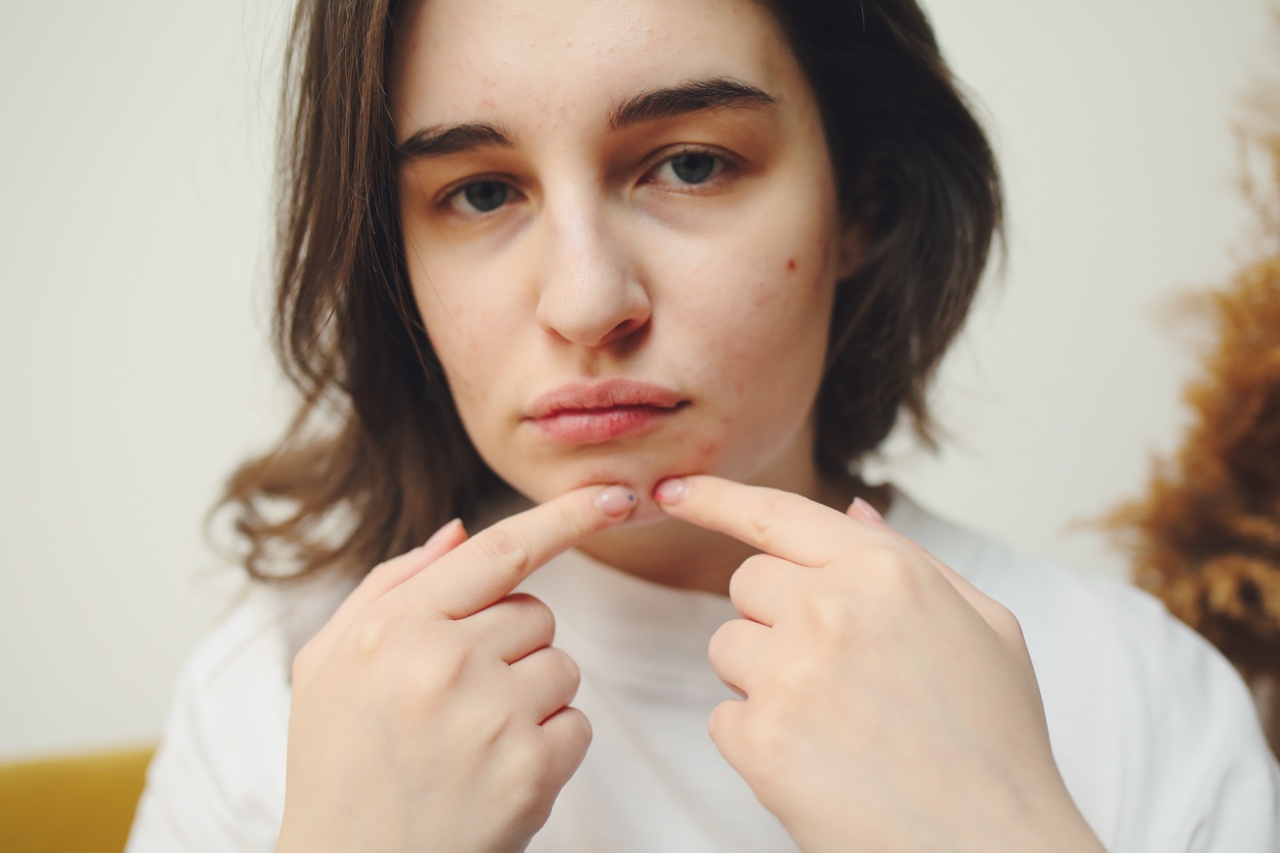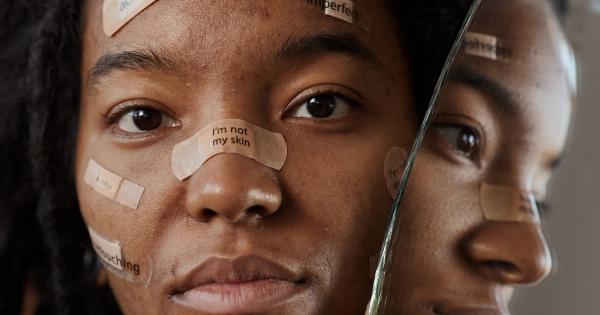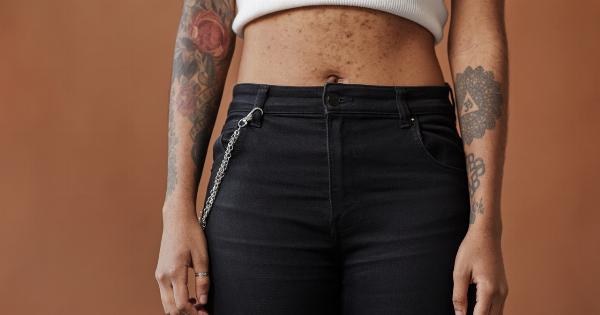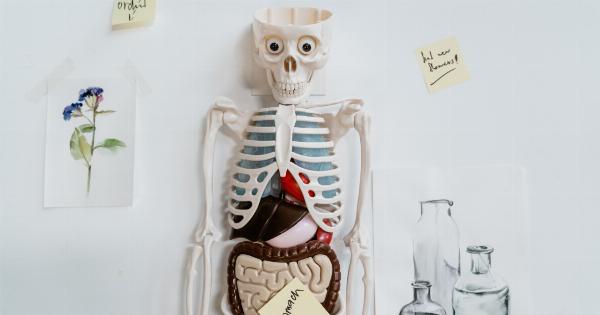Acne is a common skin condition that affects millions of individuals worldwide.
While most people are familiar with the typical appearance of acne, consisting of pimples, blackheads, and whiteheads, there is another type of acne that often goes unnoticed – internal pimples or hidden acne.
What are Internal Pimples?
Internal pimples, also known as blind pimples or cystic acne, are a type of acne that develops underneath the skin’s surface.
Unlike regular pimples, these lesions do not have a visible head and are often characterized by painful, inflamed nodules beneath the skin. Due to their hidden nature, internal pimples can be more challenging to treat and tend to linger for a longer duration.
The Causes of Internal Pimples
Internal pimples usually occur when the hair follicles become clogged with excess sebum (oil), dead skin cells, and bacteria. However, several underlying factors can contribute to the development of these painful blemishes:.
1. Hormonal Imbalances: Fluctuations in hormone levels, particularly during puberty, menstrual cycles, or hormonal disorders, can trigger the overproduction of sebum, leading to internal pimples.
2. Genetics: A family history of acne or a genetic predisposition to higher sebum production can make individuals more susceptible to developing internal pimples.
3. Poor Skincare Habits: Failing to cleanse the skin properly, using harsh or comedogenic (pore-clogging) skincare products, and neglecting to remove makeup at night can all contribute to the formation of internal pimples.
4. Diet: Research suggests that consuming a high glycemic index diet, which includes sugary foods and refined carbohydrates, may exacerbate acne symptoms, including internal pimples.
5. Stress: Chronic stress can trigger hormonal imbalances, leading to increased sebum production and inflammation, which can contribute to the formation of internal pimples.
How to Identify Internal Pimples
Identifying internal pimples can be challenging, as they are not easily visible on the skin’s surface. However, certain signs can help differentiate them from other types of acne:.
1. Painful and Deep: Internal pimples are often associated with a throbbing or tender sensation. They are deep within the skin and may feel like hard nodules beneath the surface.
2. Inflammation: These hidden pimples are typically accompanied by redness, swelling, and increased warmth in the affected area.
3. No Visible Head: Unlike regular pimples, internal pimples do not develop a white or blackhead. The absence of a visible head is a distinguishing feature.
4. Slow Healing: Internal pimples tend to heal at a much slower rate compared to other types of acne. They can often last for several weeks or even months.
How to Treat Internal Pimples
While internal pimples may be more challenging to treat, there are several effective treatment options available:.
1. Topical Retinoids: Prescription creams or gels containing retinoids, such as tretinoin or adapalene, can help unclog pores, reduce inflammation, and promote cell turnover, aiding in the treatment of internal pimples.
2. Oral Medications: Dermatologists may prescribe oral medications, such as antibiotics, hormonal contraceptives, or isotretinoin, to target the underlying causes of internal pimples.
3. Intralesional Injections: For particularly stubborn or large internal pimples, a dermatologist may administer intralesional corticosteroid injections to reduce inflammation and promote healing.
4. Skincare Routine: Establishing a consistent skincare routine that involves gentle cleansing, exfoliation, and the use of non-comedogenic products can help prevent and manage internal pimples.
5.
Lifestyle Changes: Making certain lifestyle modifications, such as reducing stress levels, adopting a balanced diet low in high glycemic index foods, and avoiding excessive touching or picking at the skin, can also aid in the treatment of internal pimples.
When to Seek Professional Help
While home remedies and over-the-counter treatments may be sufficient for mild cases of internal pimples, it is crucial to consult a dermatologist if:.
1. The condition persists or worsens despite conventional treatment methods.
2. Internal pimples cause severe pain, discomfort, or begin to affect daily life activities.
3. The affected area shows signs of infection, such as increased redness, warmth, or the development of pus.
A dermatologist can provide a personalized treatment plan based on the severity of the condition and individual needs.
Preventing Internal Pimples
While the prevention of internal pimples can be challenging, incorporating these skincare practices into your routine may help:.
1. Cleanse Regularly: Gently cleanse the skin twice daily using a mild, non-comedogenic cleanser to remove excess oil, dirt, and impurities.
2. Moisturize: Use a lightweight, oil-free moisturizer to prevent excessive dryness, which can lead to increased sebum production.
3. Avoid Touching the Face: Touching or picking at the skin can introduce bacteria and exacerbate inflammation, leading to the development of internal pimples.
4. Use Non-comedogenic Products: Choose skincare and cosmetic products labeled as non-comedogenic or oil-free to prevent clogging of the pores.
5. Protect from the Sun: Apply a broad-spectrum sunscreen with an SPF of 30 or higher to protect the skin from harmful UV rays, which can worsen acne symptoms.
By following these preventive measures, you can minimize the risk of developing hidden pimples and maintain healthy skin.

























